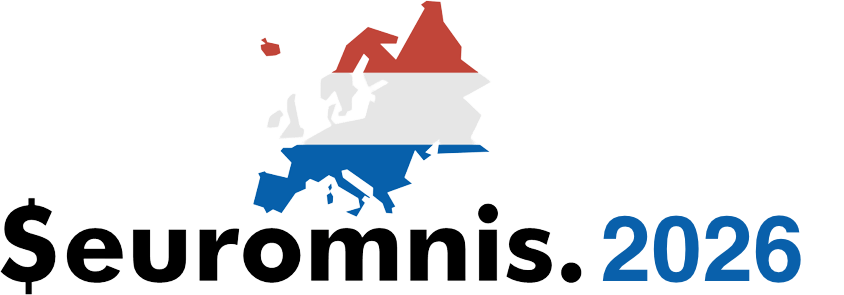4 days / 26 talks
Awesome and great speakers

Michael Monschau
Before founding Brainy Data, Michael spent over 14 years as a Senior Omnis Core engineer, designing and developing many Omnis Studio features developers use daily.
While working for Omnis Software, he built or was involved in building:
javascript web-client,
original plugin based web-client,
complex grid,
Studio report design mode,
printer devices & the printing SDK,
the SQL bridge, and
many other features.
Writing Common Javascript Controls for Web and Desktop (Parts 1 & 2)
This hands-on workshop teaches you how to create custom remote form controls using the JSON control editor and make them accessible to desktop windows. Write once and deploy everywhere. This year’s sessions will demonstrate Navlist tool & data grid component. Perry Monschau, who will co-present this workshop, is working on a third control and all will be given away at the conference to participants, with updates to prior controls.
The JSON control was introduced in Studio 8.1 with the editor arriving in Studio 8.1.1. Controls created using this editor are instantly cross-platform since the editor stores control definitions as JSON, and the controls’ functionality is coded using Javascript. No C++ required. Originally, these controls were only designed to work with remote forms for web and mobile applications. With the arrival of the JSCBridge SDK in Studio 8.1.6 however, these controls can also be used in desktop windows inside oBrowser. This opens up your desktop applications to the world of HTML and SVG based interfaces, which you can custom design around your specific needs.
The workshop is divided into two separate sessions and there is no need to attend both if you are only interested in one aspect of this workshop.
- Session 1 will develop a javascript client control for web applications -and-
- Session 2 uses the JSCBridge SDK to make this control available to desktop applications.
Session 1: javascript control for web
This discusses the design of a new kind of interactive grid-based control that organises data from a list based on customisable templates (the last grid control you will ever need)
- use the JSON control editor to create custom properties, events, constants, and methods
- look at the default Javascript that is created by the control editor
- modify the default Javascript to add content from the list data using HTML and/or SVG
- write Javascript to allow users to interact with the content and generate events
- look at a simple method to check that the JSON control and javascript are in sync
- have a question led discussion about the Omnis javascript control interface
- discuss the problem of using Omnis icons using JSON controls in order to inform Omnis Software about a pending enhancement
- use local storage on the client to store Omnis data including lists
Session 2: deploying JS controls in oBrowser with JSCBridge SDK
This takes a close look at the JSCBridge SDK
- investigates what changes are required to a remote form for integration with oBrowser and JSCBridge
- explores how to send messages between the remote form and desktop windows.
- explores how to send messages to the desktop window without JSCBridge using URLs
- looks at potential solutions to the JS client smart list problem
The 4 cornerstones of Omnis programming
This session delves into the hidden advantages of Omnis’s exceptional data handling, programmability, performance, and flexibility, enabling developers to create exceptional code and components. Omnis’s power stems from its ‘smart’ design of calculations, notation, object orientation, and internal data management. Developers can achieve remarkable software results by using these four key pillars of Omnis programming.
Omnis, like artisan breads, offers a unique flavour due to the 4 cornerstones. Whether writing external components or Omnis code, understanding these ingredients yields great results. The session introduces the Omnis way and then reveals techniques and considerations useful in everyday Omnis development.
Session topics
- look behind the scenes of oWrite/jsoWrite data merging and document production, specifically
- object orientation
- notation and calculations
- data handling
- the potential of table classes in data merging (the Omnis way)
- adhoc-reporting
- devices and printing
- fast RTF, HTML and PDF production
- balancing data merging and document production on the JS Client
- php based spell checking with server-based custom dictionaries
- look behind the scenes of oGantt/jsoGantt and oCal/jsoCal, specifically
- list handling in general
- the role of smart lists and table classes
- the problem of list manipulation on the JS client
- possible solutions to the problem of smart lists and the JS client.
- compare the different syncing approaches used by jsoWrite and jsoGantt
- using local storage -and/or-
- syncing every change
- sharing insider knowledge on the print manager, including obscure report, page-setup, and device notation.
OWrite, PDFDevice and PDF/UA (Universal Accessibility) support
This session is centred around Brany Data components, discussing the ins-and-outs and how-to’s of those components. If you use any of their components, please feel free to come with your questions and get some answers.
Michael can also present existing or upcoming features in his components. For instance:
- Universal Accessibility (UA) support for PDF’s (like ARIA on web pages) provided in oWrite and PDFDevice goes beyond just supporting reading order. It can also tag PDFs with information like page headers & footers, tables, column headers & cells, and bullet & numbered lists.
- Using $attachobj in interface design to separate interface management from window classes into re-usable non-visual object classes
- Current progress on the jsoGantt port being developed in cooperation with 888 Software Products Italia
